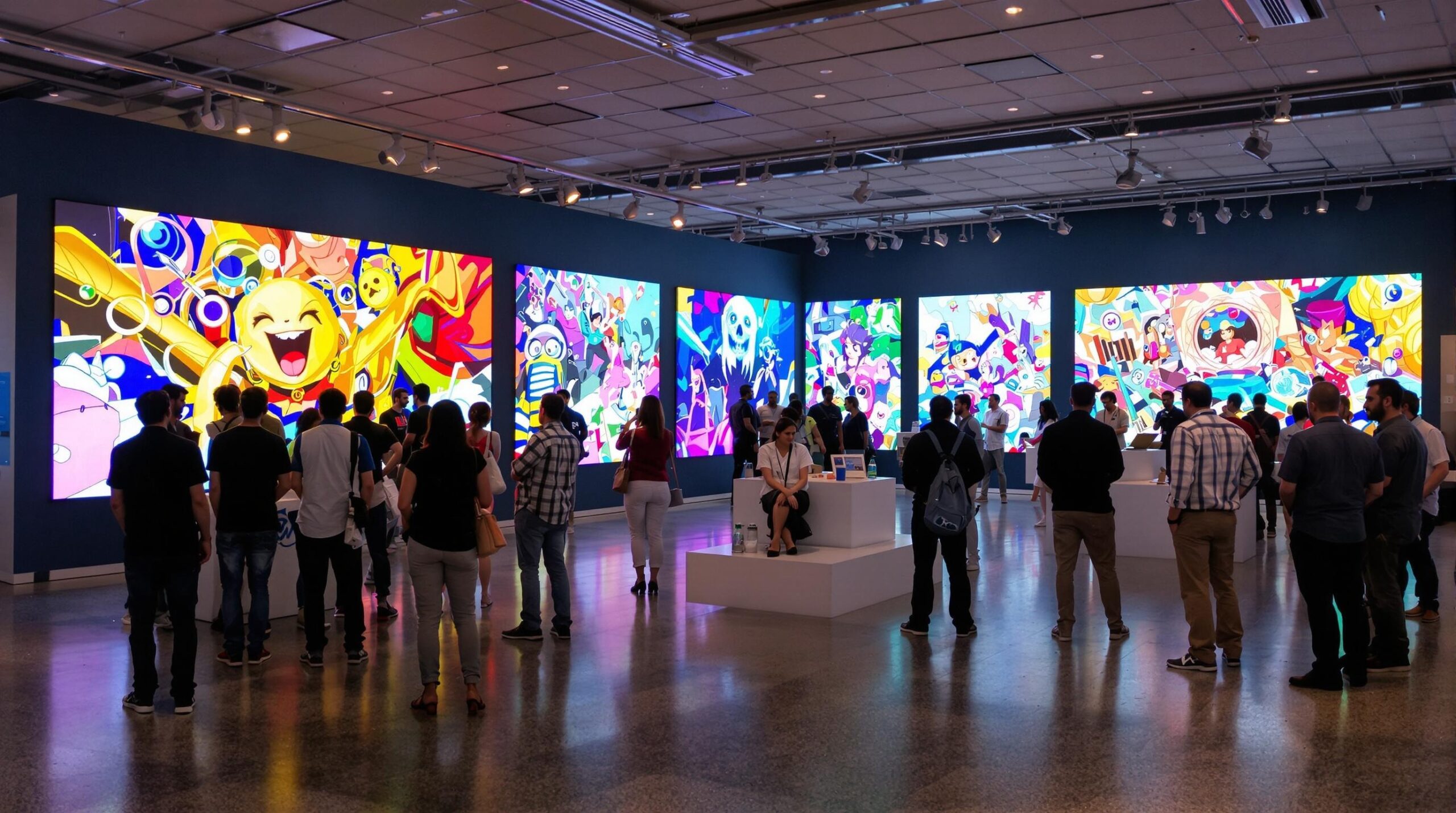The emergence of digital art NFTs has transformed the entertainment industry. Non-fungible tokens (NFTs) have introduced a new paradigm for valuing creativity. With blockchain technology, NFTs authenticate ownership of digital creations. This shift redefines how artists, musicians, and entertainers monetize their work. NFT adoption also challenges traditional norms and brings fresh opportunities.
Understanding NFTs and Their Impact on Art
NFTs are unique digital assets representing ownership of artworks, music, and more. Unlike cryptocurrencies, NFTs are not interchangeable. Each token is distinct and verifiable through blockchain technology, ensuring authenticity and provenance. This innovation provides artists with unprecedented control. Creators can link their work to an indelible digital certificate. NFTs offer them a new revenue stream and creative freedom.
The NFT market has grown rapidly, attracting the attention of artists and investors worldwide. Record-breaking sales have highlighted the shift to digital art. For instance, Beeple’s “Everydays: The First 5000 Days” sold for $69 million in 2021. Traditional and digital creators now explore NFTs, eager to capture this market’s potential. NFT platforms like OpenSea and Rarible have become crucial in this ecosystem.
Opportunities in the Entertainment Industry
In the entertainment industry, NFTs are revolutionizing how content is distributed. Musicians, filmmakers, and video game developers explore tokenization for-profit and engagement. Artists can sell exclusive access to unreleased tracks, or backstage passes as NFTs. This model enables direct interactions with fans and investors. Notably, Kings of Leon released an album as an NFT package in 2021.
Entertainment companies view NFTs as tools for audience engagement. NFTs can foster genuine connections between creators and consumers. By offering exclusive digital collectibles or experiences, businesses nurture fan loyalty. The film industry also experiments with NFTs. Some filmmakers have launched film-related NFTs, offering perks like behind-the-scenes content and limited-edition collectibles.
Advantages of NFTs for Creators
NFTs empower artists with various advantages. Direct sales enable creators to bypass traditional intermediaries like galleries or production companies. Artists receive a larger share of proceeds and maintain creative control. Additionally, smart contracts embedded in NFTs allow creators to earn royalties on resales. This feature ensures artists benefit from increased value over time.
Moreover, NFTs facilitate new forms of collaboration. Designers, musicians, and visual artists can co-create digital works and share ownership. This collaborative approach fosters innovation and cross-media projects. By leveraging NFT technology, creators can expand their artistic horizons.
Challenges and Criticisms
Despite the benefits, NFTs face challenges and criticisms. Environmental concerns are prominent, as blockchain technology consumes substantial energy. Efforts are underway to develop eco-friendly alternatives. Ethereum, the primary platform for NFTs, is transitioning to a proof-of-stake mechanism. This shift aims to reduce the energy footprint of NFT transactions.
Market volatility and speculation are additional concerns. The fluctuating value of cryptocurrencies affects NFT prices. Critics argue that some buyers treat NFTs as speculative assets rather than appreciating creative content. To address this, platforms educate audiences about NFTs’ artistic value. Transparency and ethical practices are crucial for fostering trust in this evolving market.
Transitioning to a Sustainable Future
As NFTs integrate into the entertainment industry, sustainability becomes imperative. Artists and companies are exploring eco-conscious practices. Blockchain developers aim to make the technology more efficient and less resource-intensive. Reducing energy consumption and carbon footprints is essential to broadening NFT adoption.
Education also plays a vital role in this transition. Creators and consumers must understand the implications of NFTs. Workshops and seminars help demystify the technology and equip artists with the knowledge to navigate the evolving landscape. The industry can create a more inclusive and sustainable ecosystem by fostering awareness.
Conclusion
Digital art NFTs are revolutionizing the entertainment industry’s creative landscape. They provide artists with innovative ways to monetize their work. NFTs also offer collectors and fans unique opportunities for engagement. Despite challenges like environmental impact and market volatility, NFTs continue to gain momentum. With ongoing efforts to address these issues, NFTs are poised to redefine creativity’s value in the entertainment sphere.
As the industry embraces NFTs, the future of digital art remains promising. Blockchain technology will facilitate new forms of expression and collaboration. Artists will continue to explore novel avenues, pushing the boundaries of creativity. Integrating NFTs allows the entertainment industry to cultivate a vibrant and sustainable arts culture that celebrates artistic value.


